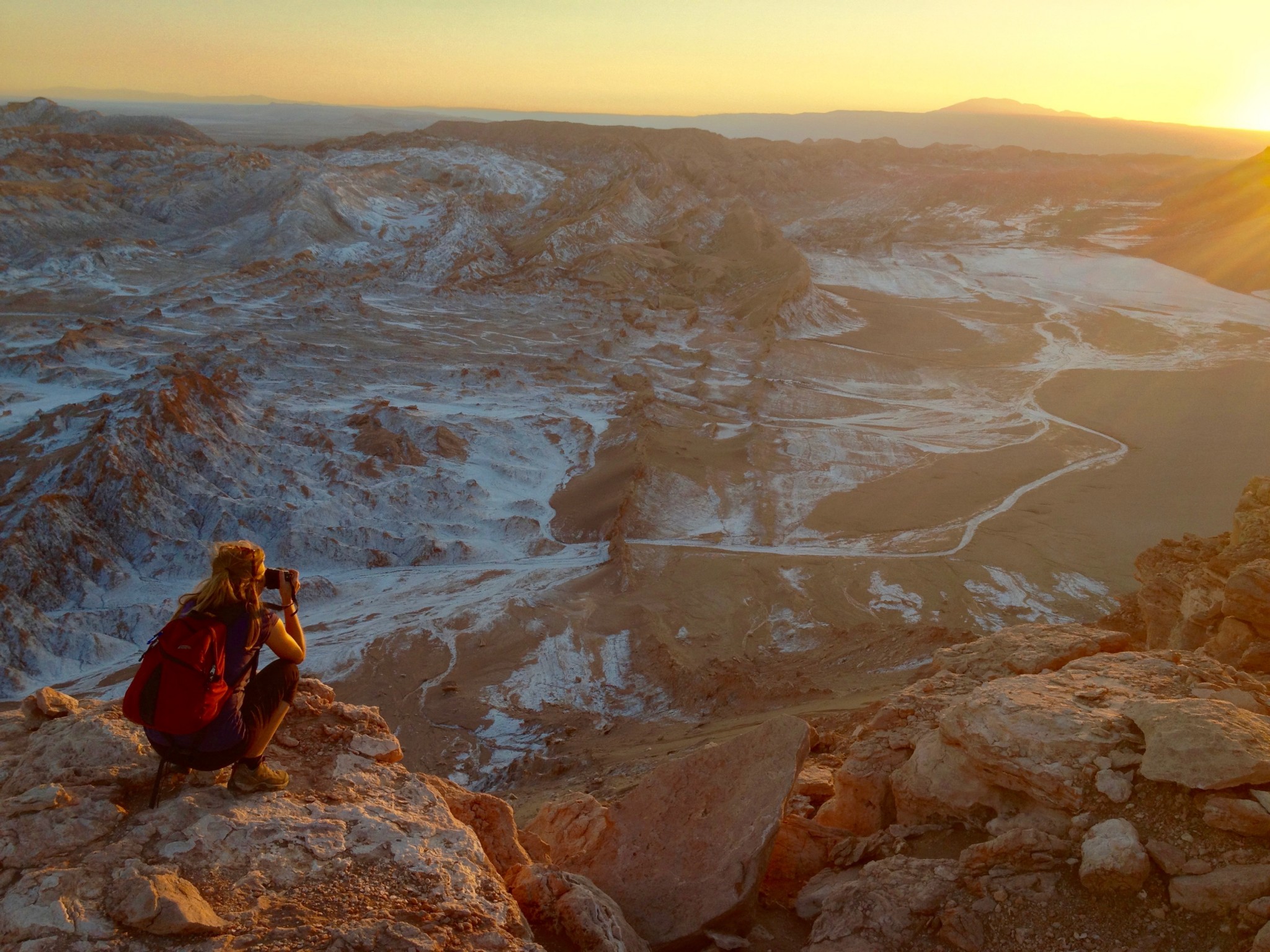One hand taps at the keyboard while another clasps an icy margarita. No headphones needed – the lapping sound of waves is enough to soothe you through another day as a travel blogger. You've spent the morning snapping drone shots of the pristine beach for Instagram, and now you're journalling about your recent volunteer trip in Costa Rica.
Sound like a dream?
Yep, it is. And nothing more.
Travel blogging is one of the most misrepresented careers out there – including by bloggers themselves. Now, I'd be lying if I said travel blogging isn't great. It's awesome. What began as a hobby for me seven years ago is now my main line of work. But travel blogging is so different from how its often painted, and it's important to know this before quitting your day job.
So, want to start a travel blog (without selling out)? Sit tight, this will take awhile, here's the thorough ins and outs running your own profitable travel blog!
How to start a travel blog
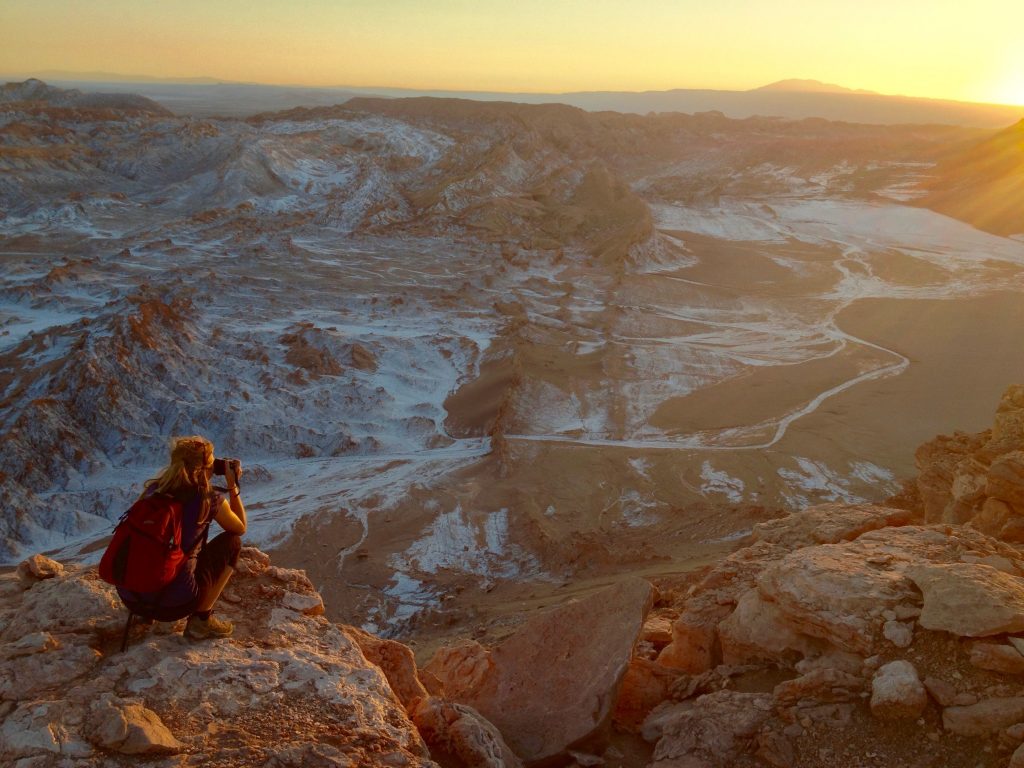
1. Decide on a purpose or niche
If you're blogging for fun, you needn't stress about this; your purpose is simply to journal your ideas and adventures. Easy!
If your end goal is to earn money, pick a niche. The exception to this is if you wish to run a lifestyle-focused travel blog where readers follow your adventures. Otherwise, people should immediately understand what your blog is about from the moment they arrive at your homepage.
It can take time to figure out your niche, and it may even change as you blog. We initially blogged about our adventures, then transitioned into sharing cost-cutting advice and how-to guides (our blog as you see it now!).

Here are some questions to help you identify a focus:
- What am I passionate about sharing with others?
- What are my strengths and expertise?
- What types of blogs do I like and why?
- What are my interests? E.g. ooking, hiking, adventure travel, culture, food, eco-tourism, luxury travel.
2. Choose a blog name
Pick a name, any name. Actually, nope. Do not pick a name at random. Choose something that conveys your concept in a few words.
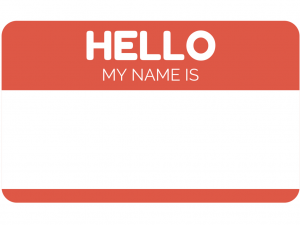
Some quick tips on choosing a blog name:
- Make sure it reads cleanly in a URL. For instance, “As Sweet As Anything” may sound okay, but assweetasanything.com is long and begins with the word “ass”. Keep it short. We recommend Namecheap for registering a domain name, so try a few of your ideas in their search tool to see if they are available. (Note: our recommended web host Siteground mentioned below include a free domain name, so if you're signing up with them, don't buy the domain name on Namecheap!)
- Consider your niche and longevity in a name. Doing a 6-month trip to Asia? “Jen in Asia” is a great blog name for 6 months. What happens after that? What if you travel to Europe? If you want to blog long-term, make sure your title will stand the test of time.
- Pick a name that makes sense. Ask your most brutally honest friends for feedback on a few of your name ideas. Sleep on the choices and go with your intuition.
- Check if social media channels are available under that name. Check platforms like Instagram, Facebook Pages, Twitter, Pinterest, Youtube, for name vacancy. You needn't drop a name entirely if you can't grab it on all those platforms, but it is ideal to have the key ones.
3. Choose a web host
Now you have a name. Where does the rest of the blog come from? You need to choose blogging software for managing your blog. WordPress is the most popular (it's what we use), as it has many free plug-ins and themes to quickly get your site off the ground. WordPress itself is 100% free, but you will need to pay for a web host to actually install it on and serve your blog posts from.
Note: Many blogs recommend Bluehost (likely due to its high commission payout), but errors, complaints, and slow-loading websites have put it on our “avoid” list.
4. Select a theme
This is the fun part! WordPress comes with a few themes for free, so you can skim the options. If you really want your blog to stand out from the rest, we recommend purchasing a professionally designed theme from Themeforest (they do have free ones too). Another drag-and-drop theme that is popular amongst travel bloggers and worth checking out is the Genesis Framework.
To ensure you're getting an easy-to-use theme, see if the theme has a lot of sales and reviews, and whether the seller has created a lot of other WordPress themes before. After purchasing a theme, you can upload it directly from your WordPress control panel, and voila – you now have your very own travel blog!
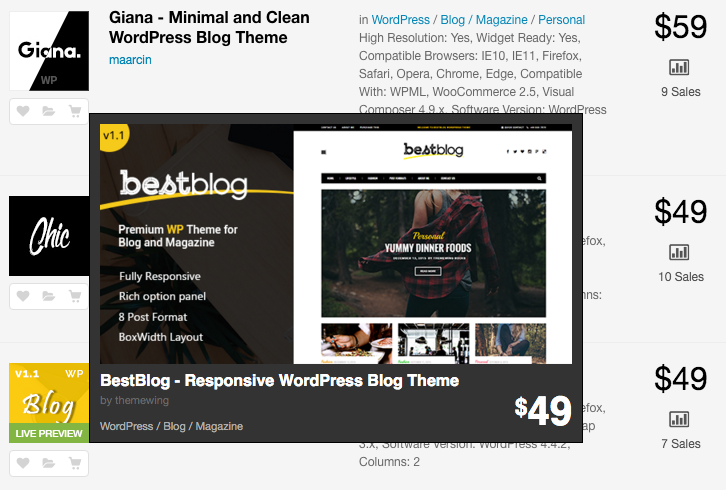
5. Backup, backup, backup!
It's essential that you make sure your website is being regularly backed up. If you accidentally delete something, install a plugin that breaks your website, or even if your web host loses your data, you can always restore your site if you have a good backup!
 Jetpack (by WordPress) has something called the personal plan. For $3.50 USD per month, you get daily, automatic backups of your website to their servers, anti-spam filtering on your comments, and priority support from WordPress with your questions. Restoring or moving your site is as simple as installing the Jetpack plugin, logging in, and clicking restore on the backup you need to retrieve.
Jetpack (by WordPress) has something called the personal plan. For $3.50 USD per month, you get daily, automatic backups of your website to their servers, anti-spam filtering on your comments, and priority support from WordPress with your questions. Restoring or moving your site is as simple as installing the Jetpack plugin, logging in, and clicking restore on the backup you need to retrieve.
We pay for this plan, and it's worth every penny. If you take your blog seriously, there is no simpler way to backup your website.
6. Install essential plugins
One of the best things about WordPress is how many plugins are available. Can't make your page look a certain way? Want to insert fancy photo galleries? Chances are, a plugin exists for whatever you need.
Here's a few of our essentials:
- Jetpack: An official WordPress plugin with a whole toolkit of essential tools, like social share buttons, photo galleries, anti-spam on comments, and website backup. Some features are paid (like backup) but most are FREE!
- Yoast SEO: This toolkit will review your posts and give you tips to rank highly on Google (and thus get more traffic)
- WP Super Cache: An official WordPress plugin, this will drastically speed up your website by caching your pages.
- MonsterInsights: Lets you easily integrate Google Analytics into your site, so you can track how many visitors you're getting, your most popular posts, and more.
- Mailchimp: Mailchimp gives you signup boxes to collect e-mail addresses from your visitors, then send them newsletters using their easy newsletter builder. You can use the code provided on their website, or easily use their official plugin.
- Advanced Ads: If you're looking to put ad space on your site, either with AdSense or by selling ads directly, this plugin is one of the simplest solutions.
As a general rule of thumb, try to install as few plugins as possible, since having too many plugins can slow down your website.
7. Get posting!
It's time to post your thoughts to the world. Once you've gotten a few posts up, share your blog with friends or family to let them know of its existence. Don't be too hard on yourself in the beginning, and never sacrifice post quality for frequency.
How to make a profitable travel blog: 5 tips to success
Earning money blogging is entirely possible, but there are three things I feel obligated to disclose first:
- It will take longer than you anticipated
- It will be a lot harder than you think
- It will not always be enjoyable
If you're really serious, don't let any of this deter you. Is the blogosphere over-saturated with travel blogs? Yes. But can you imagine what the world would be like if musicians or artists had a “give up” attitude because of over-crowding? An excess of voices doesn't mean there isn't room for yours.

Tip 1: Write decently and honestly
While there is no shortage of blogs with mediocre writing that are raking in the dough, I do believe that blogs with honest, quality writing withstand the test of time. If you're dreaming big, invest in your writing.
No matter how experienced you are, every writer can always improve. Here are some quick tips to writing decently:
- Always re-visit blog posts with fresh eyes before publishing. This allows you to re-read, catch errors & possibly restructure.
- Be concise. That doesn't mean only write short blog posts. It means that each paragraph and sentence should be worthy of its space. Headings make information more digestible.
- Be honest. The more raw and exposed you are, the greater readers will connect with you as a writer. Honesty, whether good or bad, leaves a lasting impression.
- Read as much as you can. Whether blogs, books, articles, or magazines, reading will enhance your vocabulary, writing, and offer inspiration.
In addition to reading novels and other travel blogs, I strongly recommend reading blogs and books on travel writing. Don George is an expert travel writer, author of Lonely Planet's “How to Be a Travel Writer” guide, which is a good place to start.
Tip 2: Be consistent and patient
Posting routinely is what generates interest and engagement from readers. How often should you post? That's debatable. In our experience, it's better to post less often with great content, than frequent posts that are rushed and subpar.
Next: be patient. It takes time to build an authentic audience. Keep posting and remain active on social media, and people will stick around and follow you.
Now, many bloggers use a “follow for follow” approach to audience building. This is a time-consuming tactic that we wouldn't recommend, but some bloggers swear by. Straight up, I find it annoying, and it pulls time from other aspects of the blog like writing and editing.
Tip 3: Talk to the experts
If you want to take your blogging to the next level and turn it into a real business, we strongly recommend investing the money on a blogging course. There is far too much information out there to be learned on your own.
The popular budget travel blogger Nomadic Matt has come out with his own course, Superstar Blogging. It offers easily digestible and accurate information on writing, ways to monetize, and more.
The active Facebook group for the course is a great place to ask questions and get responses from Nomadic Matt's team and sometimes himself. The group is also a way to connect with other bloggers in your field.
Tip 4: Have passion and be brave
Without passion, you will not have the motivation to post week after week, month after month, for an indefinite amount of time. If you are inspired to share your stories and advice, then all you need is the strength to put yourself out there.

Unfortunately, fear prevents people from pursuing many creative endeavours, including starting a blog. If feeling afraid is a huge deterrent for you (as it is for many), I would strongly recommend Liz Gilbert's book, “Big Magic“. Another must-read is Mark Manson's, “The Subtle Art of Not Giving a Fuck” – perfect inspiration to, well, not give a fuck!
Tip 5: Decide how to generate income
Once you have sizeable traffic, then the opportunity to monetize comes in. There are several ways, to do and I'll walk you through them here. (Psst, if you want to read more in-depth on this, check out TwelveSkip's tips – her blog is filled with great advice!).
Ads
Inserting Google banner ads (AdSense) onto blog posts is one way to earn money. As you've probably seen, we have ads on some of our articles. We feel it's fair to do so in exchange for providing highly detailed free information to our readers. That being said, you need high traffic on posts to generate significant income, and most blogs find that ads are not worthwhile. The plugin we use that makes this easy to implement is WP Advanced Ads. In addition to using Google's AdSense, it also lets you sell ad space to advertisers directly on your site.
Affiliate links
Some products or websites provide a small commission or percentage of each sale via an affiliate link. This means a blog can insert a link for say, Amazon, to a product they are reviewing and receive a small amount if a reader clicks the link.
Affiliate programs often only pay out when you've made a certain amount (e.g. $100). As with ads, you need sizeable traffic to make decent money. In the blogosphere, most blogs earn the majority of their income on affiliates, and this is the case for us. We only use affiliate links for websites and services that we personally use and recommend, so it's a great way to make a bit of money without selling out to your readers.
To get started, we recommend signing up for Shareasale, CJ, and Affiliate Window, which all have agreements with many travel websites you might wish to promote.
Social media takeovers
This is more for the big blogs, but yes, you can actually get paid to takeover social media accounts of brands (usually Instagram). The idea is that it draws the audience of that blogger to a particular brand (similar to sponsorship – covered next). For smaller blogs, this is not going to be a main income stream (or even be an option at all), and you need a large following to land such opportunities.
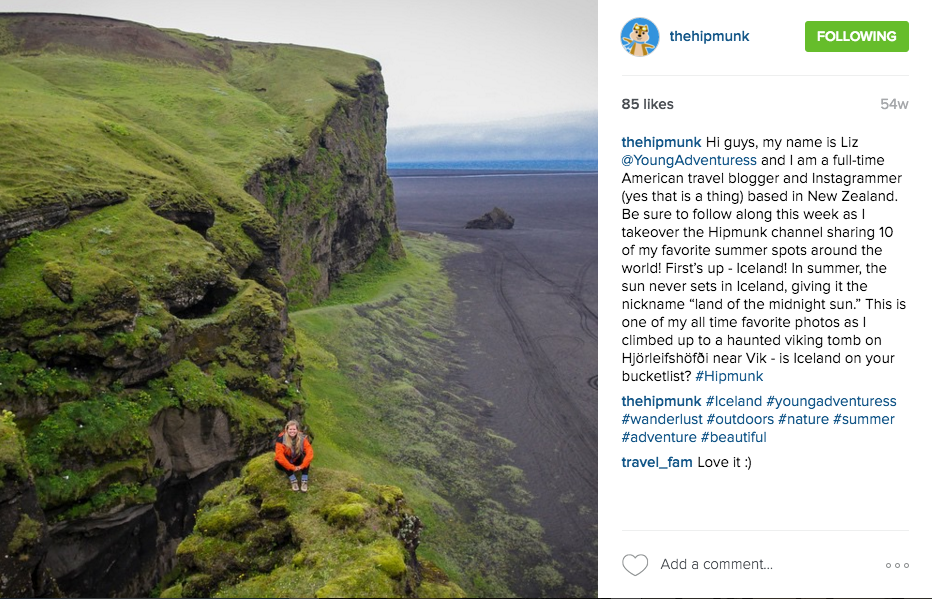
Sponsored content
A sponsored post is content written for a company that is published on your blog. For instance, a hotel may request you to review them in exchange for a free night's stay, payment, or both.
Sponsorship can work well when the brand or product fits within your niche. It can also leave a taste of bias on readers' palates. Providing honest negative feedback also gets tricky when working under the pressure of a sponsor.
Sponsored trips
A sponsored trip usually means some or all expenses are paid for and/or you receive payment in exchange for providing content on a trip. Such content could include one or several blog articles, or social media shoutouts.
The main issue with sponsored travel is that it often does not actually provide payment (but bloggers take the bait). At the end of the day, complimentary trips aren't a sustainable form of income. You'll have to get a backbone for negotiating, and/or find supplemental ways to earn on your blog.
For examples of blogs that execute sponsorship with selectiveness and lack of bias, check out Alex in Wanderland and Young Adventuress.
E-books
If you have even the slightest knowledge of anything, you can write an e-book. Many bloggers generate a significant income on e-books, whether that be guides or their own travel tales. Here and here are useful guides on how to publish one and generate a passive income stream.
How to earn money blogging without selling out
Yep, it's possible. Our advice? Be selective, focus your efforts on producing quality content, and your traffic will come.

When brands or companies ask you for work, ask yourself: is this an opportunity I would be interested in enough to seek out myself? Remember: the more misfit opportunities you turn down, the greater the credibility of your blog.
Work conditions & pay
How much do travel bloggers get paid? That's as subjective as asking how much a musician makes. In other words, the answer depends on how big of a deal you are.
On average, it takes at least a year of FREE full-time love and labour to turn a profit on a blog (this was the case for us). Are you willing to invest one year of your time, likely with little or no return? If you have a genuine passion, the answer to this will be an enthusiastic HELL YES.
Now, established bloggers can earn a lot – even six-figure salaries. But in saying that, I'm referring to bloggers who have been around for years. Generally, your income will vary from month to month, with no surefire way of knowing how much you will make. Anywhere from a few hundred to thousands and even six figure incomes are known to be made in the blogosphere.
How to start a travel blog: The Thrifty Gist
- Get yourself set up with the basics – a blog name, domain, web host, social media channels, site backup, and plugins
- Focus on producing regular, quality content to generate traffic and gain committed readers
- Experiment with different monetization approaches such as ads, sponsored posts, and affiliate programs
- Get comprehensive insights from the experts – Superstar Blogging is an all-encompassing course with an active Facebook support group
- Keep it real – honesty will draw in a committed readership in the long-term
Additional Resources
Here are some excellent and inspiring reads on blogging if you're serious about starting a travel blog!
- So you want to be a travel blogger, do you? – Young Adventuress
- 10 tips for starting a kickass travel blog – Young Adventuress
- How to become a professional travel blogger – The Planet D


